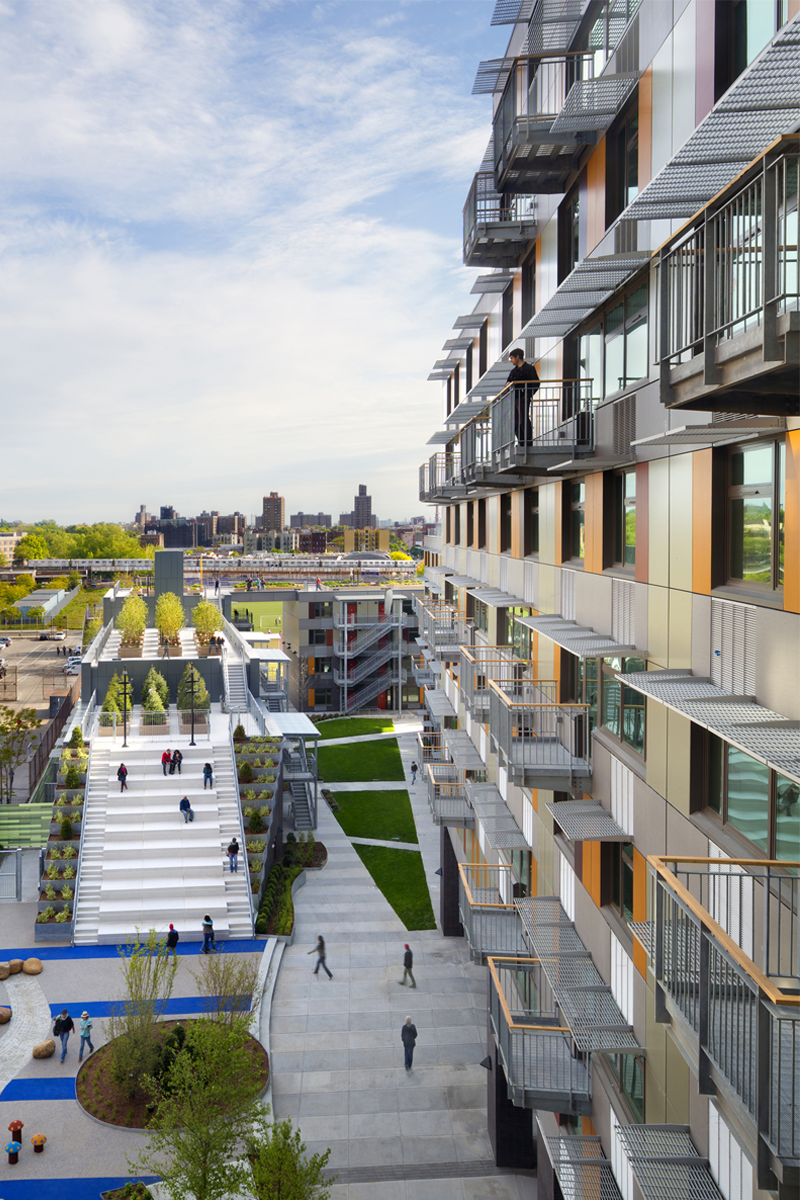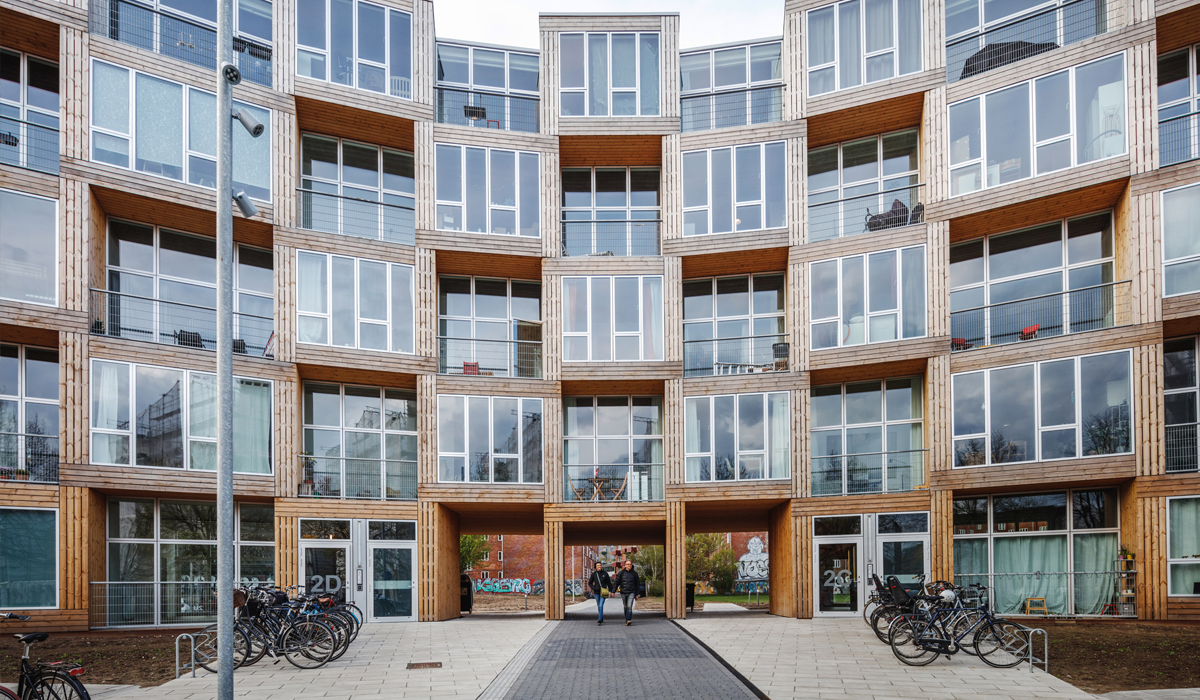How can Architecture harness changing housing policies in Mexico City?
As SEDUVI publishes new policies to incentivize affordable housing in Mexico City, architects search and look at three different international models in order to understand what policies have been implemented elsewhere and how architecture responded accordingly to inform a new wave of affordable housing.
In this time of quarantine and social distancing, something has become abundantly clear. In order to curtail these orders, one must have a proper home in which to fulfill quarantine. Unfortunately, that is not the case for many people across the globe and Mexico City.
Many households worldwide are overburdened with housing costs which means that they spend more than 40% of their income in rent or mortgage in the private market (OECD, 2019). And according to UN-Habitat, only 13% of the world’s cities offer affordable housing currently in order to meet the demand of overburdened households (UNHABITAT, 2016). Mexico City is no different, as the city requires 120,000 new households annually an only 40,000 get built. Which places the average price of an apartment at 3.5 million pesos(SOFTEC, 2020), hardly accessible for the median monthly wage of 17,000 pesos (INEGI, 2020)
Main Problems to Solve
Affordable or accessible housing is difficult to define in itself given the economic and cultural variability around the world. UN-Habitat defines affordable housing as “housing which is adequate in quality and location and does not cost so much that it prohibits its occupants from meeting other basic living costs or threatens their enjoyment of basic human rights. (UN HABITAT, 2011) This definition places housing at the center of a larger policy debate rather than a solely architectural one.
But as we look at to tackle this problem from the point of view of architects it is important to note that this is a policy problem as well, and a lot of the solutions lie in alternate fields that enable architects to produce high-quality affordable housing for their users.
Some of the main problems pertain to land. There is a lack of parcels available for such types of projects that are located in desirable communities with good access to transportation and services. This is due to densification or the lack of appropriate zoning for an open plot of land.
A second problem is financing. There is on-going (healthy) debate on whether the public
sector should build affordable housing or whether the private sector should be incentivized to do as such. Recently the latter has been the tendency in cities around the world.
The problem we are most connected to as architects is the third challenge in costs associated with the design and construction of these spaces. Building is always a resource-intensive activity that given budgets tries to adapt to its circumstances. Architecture tries to provide the most value possible but the questions begin to be on how affordable housing should look, work, and be optimized given tight budgets.
And the fourth and arguably most important problem is how does the public access these projects. Lottery systems, rent controls, different forms of tenure are some solutions that can arise for a segment of people that have a harder time accessing usual financing vehicles such as loans, credit scores, and stable incomes.
As fr-ee prepares to join this discussion in order to design housing alternatives in Mexico City, we have studied different examples around the world that have combined policy changes with architectural solutions.
Case Studies

Example 1: Via Verde by Dattner Architects and Grimshaw in South Bronx, NY
The architecture project of Via Verde proposes 222-unit affordable housing development in an unusually shaped site which used to be a brownfield. This added to the cascading effect of the building provides the families a location in South Bronx, NY with plenty of exterior amenities due to its terracing and LEED Certification features.
The architecture project of Via Verde proposes 222-unit affordable housing development in an unusually shaped site which used to be a brownfield. This added to the cascading effect of the building provides the families a location in South Bronx, NY with plenty of exterior amenities due to its terracing and LEED Certification features.
In this specific case, it is important to note the clever use of a usually overlooked site as well as it´s well located exterior spaces that enable the families to form a sense of community. These units became available through New York City´s own housing lottery portal called Housing Connect. For those unfamiliar with it, New York City also has important policies in place in order to incentivize this sort of construction in the shape of tax deductions or rent subsidies that are managed through this central portal. All of these measures are taken in order to provide more sustainable, amenable, affordable housing stock to the market, built by private financing.

Example 3: Dortheavej Residence by BIG in Copenhagen
This 66-unit building made of prefabricated modules stacked upon each other provides a collectively undulating facade and individual identity through the use of staggered balconies that portray a chequerboard-looking facade. The units are also arranged to accommodate a natural entrance plaza and encourage the use of a private garden in the back.
As discussed before, one of the major problems for affordable housing is the cost of construction. By creating a prefabricated alternative, costs are reduced in many ways, mostly by the repetition of a large number of pieces. The other added benefit is that the on-site construction time is reduced as most of the prefabricated modules are produced off-site and shipped. This residence provides a model that can be repeated and adapted for different conditions and be built in a cheaper and faster fashion.
Future Example 4: Mexico?
Recently, the Secretaria de Desarollo Urbano y Vivienda, or SEDUVI in short, proposed new legislation called Regeneración Urbana y Vivienda Incluyente with incentives to promote the building and development of more affordable housing in Mexico City. They have designated specific zones and corridors with good access to transportation services and close to job centers for this to be applied. And in exchange for building 30% of the housing units as affordable (between 750,000 to 1.2 Million pesos), developers get tax exemptions and a speedy permit process reduced from the usual 84 working days to the lowest of 41 or even 24 working days.
By providing incentives for private developers to include affordable housing in the developments, the affordable housing stock will rise. The fact that most of the areas they have chosen are strategically located in the more central part of the city instead of the periphery is also a large step up for its inhabitants which can currently commute on average 88 minutes or 1.5 hours each way to their jobs and back home (MOOVIT, 2016).
It is a valiant effort to tackle such a multivariate problem and at Fr-ee we are ready to work on new architectures that arise from these initiatives. We are eager to discover whether these changes will be able to spark a new wave of social housing innovation prompted by public policy advances in Mexico.
Picture Credits
- Quinta Monroy by Tadeuz Jalocha
- Via Verde by David Sundberg
- Melbourne Apartment Project by Jellis Craig
- Dortheavej Residence by Rasmus Hjortshoj
Sources
https://www.oecd.org/els/family/HC1-2-Housing-costs-over-income.pdf
http://www3.weforum.org/docs/WEF_Making_Affordable_Housing_A_Reality_In_Cities_report.pdf
https://www.forbes.com.mx/cuanto-tienes-que-ganar-para-comprar-una-casa-en-la-cdmx/
https://architizer.com/projects/via-verde-the-green-way/
https://www.seduvi.cdmx.gob.mx/storage/app/uploads/public/5dc/04f/1e6/5dc04f1e6dbc0717943085.pdf
https://docs.wixstatic.com/ugd/658d28_0689056d87b642459d17bad7f5d8429c.pdf
https://www.un.org/en/development/desa/population/publications/urbanization/urban-rural.asp
Author
Nicolle Hazard Dozsa
Junior Project Leader at Fr-ee, she has participated in a number of architectural competitions ranging from public parks in California to Hyperloop stations in Mexico to Scientific Innovation Centers in China. She has a passion for sustainable architecture (in every sense of the word) that benefits not only its users but the public realm as a whole.